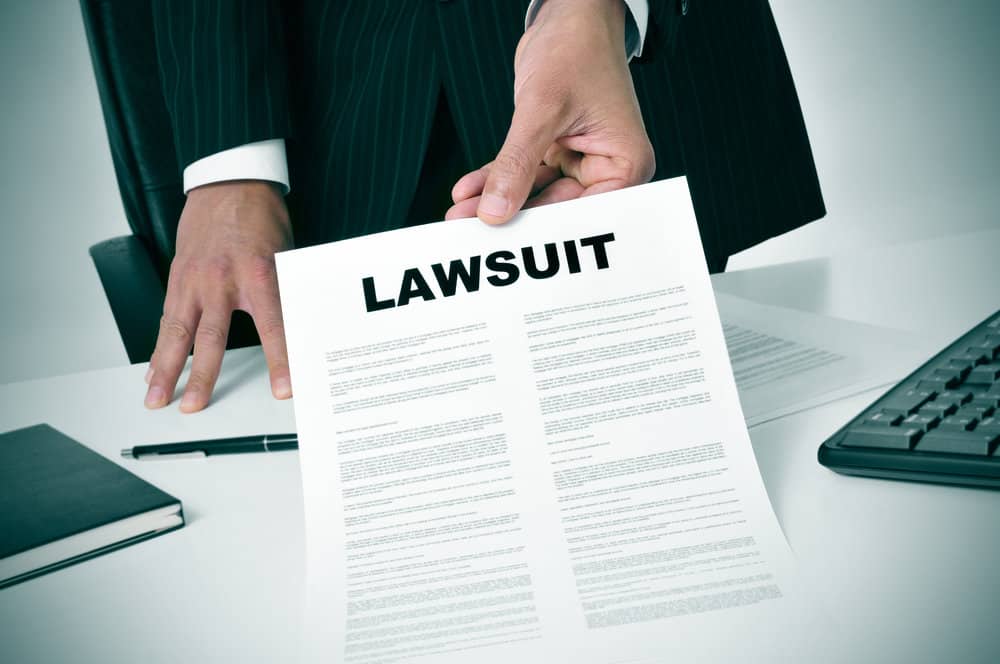In a lawsuit, it is crucial for both the plaintiff and defendant to understand which assets can be seized in a judgment. This understanding helps the parties to have a clear picture of the potential consequences and informs their legal strategy. In many cases, winning a lawsuit does not necessarily mean the plaintiff will walk away with the full amount of the judgment. Hence, identifying the assets at stake is a key consideration for all parties involved.
Assets that can be taken in a lawsuit generally depend on the specific laws and regulations governing the jurisdiction in which the case is being tried. Common assets that are subject to seizure include bank accounts, real estate, and personal property such as vehicles, jewelry, or business equipment. However, protections and exemptions are often in place to safeguard certain assets, depending on factors such as the type of debt or the jurisdiction.
It is important for individuals facing a lawsuit to consult with an attorney who is well-versed in the local laws and regulations to ensure they have accurate information on which assets are at risk. Being proactive and knowledgeable about the potential outcomes of a lawsuit can help parties make more informed decisions and navigate the legal process with confidence.
When a lawsuit is filed or about to be filed, do not take any action to protect assets without consulting an attorney.
Types of Assets Vulnerable in a Lawsuit
Real Estate and Personal Property
In a lawsuit, the judgment creditor can target real estate, including primary residences and other properties. Homes, land, and in some cases, personal property like furniture and electronics can be vulnerable, depending on the jurisdiction and specific laws.
Bank and Savings Accounts
Bank and savings accounts, such as checking and savings, can also be seized in a lawsuit. The creditors generally have the right to garnish or place a levy on these accounts to satisfy the judgment. However, specific exemptions might protect a certain amount of money in the account.
Business Assets
For business owners, business assets might be at stake, especially if they are personally liable for the debt or if the business isn’t structured properly. Items such as office equipment, inventory, accounts receivable, company bank accounts, and even intellectual property can be targeted by creditors.
Vehicles and Boats
Vehicles and boats, whether personally owned or part of a business, can be vulnerable to seizure to help satisfy a legal judgment. While some jurisdictions might provide exemptions for primary or work-related vehicles, others may allow these assets to be taken.
Jewelry and Valuables
Jewelry and other valuable items, such as artwork or antiques, can also be considered vulnerable in a lawsuit. If not protected by exemptions, these valuables can be seized by the creditor to satisfy the outstanding debt.

Protecting Assets from Lawsuits
Asset Protection Planning
Asset protection planning is essential for safeguarding one’s assets from potential lawsuits. It involves assessing one’s financial situation, identifying vulnerable assets, and implementing legal techniques to shield those assets from creditors’ claims. Some common methods used in asset protection planning include:
- Establishing separate business entities
- Transferring assets to protected accounts
- Utilizing insurance policies
- Restructuring debt
Trusts and Exemptions
Trusts play a crucial role in asset protection, as they help separate legal ownership from beneficial ownership. Some types of trusts that can protect against lawsuits are:
- Domestic Asset Protection Trusts (DAPT)
- Offshore trusts
- Irrevocable trusts
Exemptions are another vital aspect of asset protection planning. They refer to specific types or amounts of assets excluded from being seized by creditors under the law. Commonly used exemptions include:
- Homestead exemption (protects a primary residence)
- Retirement accounts (IRA, 401k, etc.)
- Life insurance policies and annuities
Federal and State Laws
Federal and state laws play a significant role in determining the effectiveness of asset protection strategies. While federal laws provide a baseline of protection, state laws can vary greatly regarding available exemptions and the degree of protection they offer. It’s essential to consult a knowledgeable lawyer to understand which strategies are most suitable for one’s specific situation and to ensure compliance with all applicable laws.
Retirement Accounts and Life Insurance Policies
ERISA and IRA Protections
Retirement accounts are often a significant asset for many individuals, and understanding the protections afforded to these accounts in a lawsuit is essential. In the United States, the Employee Retirement Income Security Act (ERISA) was enacted to protect retirement plans offered by private companies. ERISA-qualified retirement plans, such as 401(k)s and pension plans, are generally shielded from creditors during a lawsuit.
Individual Retirement Accounts (IRAs) are also subject to some level of protection, although the degree of protection may vary depending on state laws. An IRA may be exempt from attachment, garnishment, or levy in a lawsuit if it meets specific requirements, such as being a qualified retirement plan or being rolled over from an ERISA-qualified plan.
Life Insurance and Annuity Exemptions
Life insurance policies and annuities are other assets often targeted in lawsuits, but they, too may have certain protections. For life insurance policies, a policy’s protection depends on its beneficiary designation. Many states provide exemptions for policies with family or loved ones as beneficiaries, in which the proceeds would be exempt from the policyholder’s creditors.
Annuities, like life insurance policies, can be exempt from seizures by creditors depending on various factors. In most states, annuities purchased as part of a retirement plan or settled upon the advice of a certified financial planner are protected from being seized during a lawsuit.
In conclusion, retirement accounts, life insurance policies, and annuities all have varying degrees of protection against lawsuits. To maximize the protection of these assets, it is essential to understand the specific regulations and exemptions applicable in each case. Always consult a qualified attorney or financial planner to guide securing assets during lawsuits.
Garnishment and Seizure Process
Court Orders and Liens
The garnishment and seizure process begins when a court issues an order, such as a judgment, directing the seizure of a debtor’s assets to satisfy a debt. A lien is placed on the debtor’s property, which affords the creditor a security interest. Creditors may file for liens against a debtor’s real estate, personal property, or even intangible assets, such as bank accounts, stocks, or intellectual property. As a result, these assets may be targeted for seizure during the lawsuit.
Wage Garnishment
Wage garnishment occurs when a court orders an individual’s employer to withhold a portion of their wages to repay a debt. The garnished amount is then sent directly to the creditor. Wage garnishments are subject to limits set by federal and state laws, which determine the percentage of an employee’s disposable earnings that can be withheld.
Here are some factors that can affect the wage garnishment process:
- Exempted income sources, such as Social Security or disability benefits
- The debtor’s disposable earnings, which are the remaining wages after legally required deductions
- Federal and state wage garnishment limits, which may vary depending on the type of debt involved
Bank Levies
Bank levies allow creditors to seize funds directly from a debtor’s bank account, effectively freezing those accounts. A court order is necessary to implement a bank levy like wage garnishment. Once the levy is in place, the bank must comply and transfer the designated funds toward satisfying the judgment.
Some factors to consider during the bank levy process include:
- Exemptions: Certain funds, such as Social Security or retirement benefits, may be exempt from seizure.
- Multiple debts: In cases where a debtor owes multiple creditors, the timing and order of levies may impact the available funds.
- State laws: Regulations regarding bank levies, including exemptions and notice requirements, can vary at the state level.
In the garnishment and seizure process, it’s important to remember that applicable laws and regulations exist to protect creditors and debtors. Careful consideration of these rules helps ensure a fair outcome for all parties involved.
Business Structures and Asset Protection
Asset protection is crucial for business owners, as it mitigates the risks of losing personal and business assets in a lawsuit. Diverse business structures provide varying degrees of protection. Therefore, understanding these structures is imperative. This section covers the asset protection features of limited partnerships, limited liability companies (LLCs), and corporations.
Limited Partnerships and LLCs
Limited partnerships and LLCs are attractive to business owners due to their inherent asset protection characteristics. Below are the key points for each:
- Limited Partnerships:
- Two types of partners: general and limited partners
- General partners have full liability, manage the business, and can incur debt
- Limited partners enjoy liability protection up to their investment
- Assets of limited partners are less vulnerable in lawsuits against the partnership
- Limited Liability Companies (LLCs):
- Owners are referred to as members
- Liability protection for all members, regardless of their involvement
- Personal assets of members are generally protected in case of legal issues
Both structures are advantageous in asset protection, as they separate personal and business assets. LLCs, however, offer better overall protection to all members, regardless of their involvement in the business.
Corporations
Corporations are another business structure known for their distinct asset protection qualities. Key features include:
- Legal entity separate from its shareholders, directors, and officers
- Limited liability for shareholders, protecting personal assets
- “Piercing the corporate veil” is difficult, resulting in strong asset protection
Despite advantages, corporations also have higher yearly fees, stricter regulatory requirements than LLCs, and limited partnerships. Choosing the appropriate business structure is crucial in protecting assets from potential lawsuits. Understanding the distinctions between different structures is the first step to safeguard the interests of all parties involved.
State-Specific Exemptions and Laws
Homestead Exemptions by State
Different states offer varying homestead exemptions to protect homeowners from creditors during a lawsuit. In Utah, homeowners may exempt up to $42,700 of their property’s value from lawsuits. On the other hand, Hawaii provides a generous exemption of $1,000,000 for residents aged 65 or older or disabled.
Here are some representative examples of homestead exemptions in different states:
| State | Homestead Exemption |
|---|---|
| Utah | $42,700 |
| Hawaii | $1,000,000 (65+ or disabled) |
| Texas | Unlimited |
| Florida | Unlimited |
Please note that these exemptions are not absolute, and certain conditions may apply based on each state’s specific laws.
Asset Protection Considerations in Different States
Aside from homestead exemptions, different states also have various asset protection laws that can impact individuals and businesses during legal disputes. For example, some states provide robust protection to retirement accounts and life insurance policies, while others may impose caps on the exempt amount.
Before facing a lawsuit, individuals and businesses must understand their state’s specific asset protection statutes and exemptions. This will allow them to make informed decisions about asset protection strategies and determine which assets may be at risk.
Some essential asset protection considerations across different states include:
- Retirement accounts and pensions
- Life insurance policies
- Personal property exemptions
- Business assets, such as LLCs and partnerships
By familiarizing themselves with state-specific exemptions and asset protection laws, individuals and businesses can better safeguard their assets and minimize potential loss during lawsuits.
Conclusion
When an individual or business faces a lawsuit, it is crucial to understand which assets can be taken as part of a judgment. Most personal and business assets can be subject to seizure, depending on the type of lawsuit and the jurisdiction in which it occurs.
- Personal assets like bank accounts, real estate, and vehicles may be at risk, although certain assets like retirement accounts and homestead properties often receive some protection.
- Business assets, like physical property, equipment, and financial accounts, may also be at risk if the lawsuit is successful.
- Some assets, such as those held in trusts and certain types of partnerships, can protect from creditors and lawsuits.
Individuals and businesses must consult with legal professionals experienced in asset protection and litigation to navigate the complex laws and strategies for safeguarding assets from potential claims. Proactive steps, such as legally separating personal and business assets, can also mitigate the risk of extensive losses in the event of a lawsuit.
In conclusion, understanding which assets can be taken in a lawsuit is vital to effective financial planning and risk management. By staying informed and seeking professional guidance, individuals and businesses can better protect their hard-earned resources in the face of legal challenges.
FAQs
What assets can be taken in a lawsuit?
In a lawsuit, the following assets can be seized:
- Real estate property (such as a home or land)
- Vehicles (cars, trucks, boats, etc.)
- Personal property (jewelry, electronics, furniture, etc.)
- Financial accounts (bank accounts, retirement accounts, etc.)
- Business interests and assets
It varies by jurisdiction and case specifics.
Are any assets protected from a lawsuit?
Yes, some assets are protected through exemptions:
- Primary residence (varies by state)
- Insurance policies (life, disability, etc.)
- Pension and retirement accounts
- Social Security benefits
- Certain personal property (tools of a trade, prescribed health aids, etc.)
How can one protect assets from being taken in a lawsuit?
There are a few steps to minimize the risk:
- Obtain adequate insurance coverage (liability, umbrella policies, etc.)
- Utilize legal structures (trusts, corporations, LLCs)
- Consider homestead exemptions and asset protection laws in your state
Remember that these strategies are not foolproof, and it’s best to consult with an attorney.



